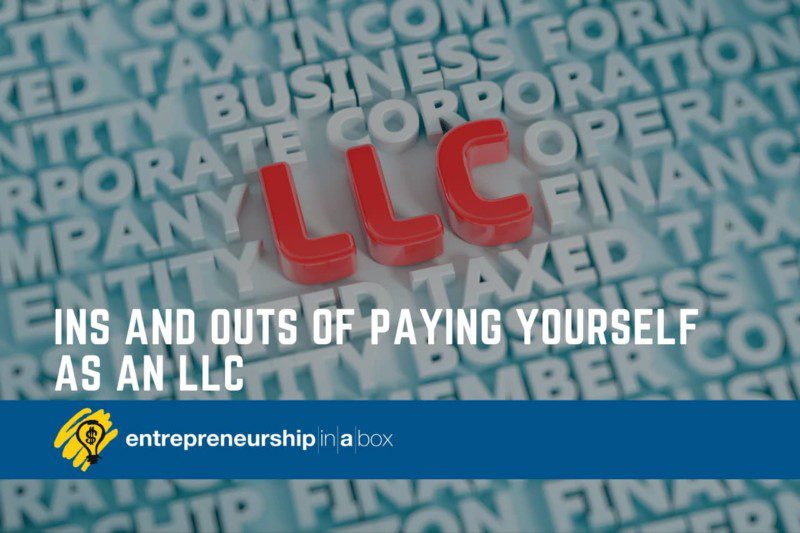As a business owner, you must pay for your personal expenses. If you accidentally mingle your personal and business finances, you’ll lose your limited liability protection if someone sues your business. So, how you can pay yourself as a LLC?
The Limited Liability Company (LLC) is the most popular type of business entity in the U.S. With an estimated 99.9% of businesses having less than 500 employees, the chances are you’re not just an owner but someone who participates in your organization’s day-to-day operations.
Let’s look at how you can pay yourself while remaining compliant.
What is an LLC?
An LLC is a hybrid business structure combining aspects of the unincorporated sole proprietorship and the traditional corporation. Its flexibility allows you to create a business structure free from the encumbrances of forming a corporation.
There are also different types of LLCs to consider, including:
- Single-Member LLC – An limited liability company with a single member. These businesses are taxed in the same way as a sole proprietorship.
- Multi–Member LLC – These companies contain multiple members and are taxed as if they were a partnership.
- Corporate LLCs – LLCs elected to be taxed as a corporation, such as a C-Corp or an S-Corp. You can only form these types of companies if you make a formal request to the IRS.
Note that different types of LLCs are still LLCs. They’re not three distinct business types. The type of limited liability company you form is purely down to your tax strategy.
Make sure you speak to a professional about the best way to mitigate your tax liability so your LLC keeps more of its money.
How to Pay Yourself as an LLC
The way you pay yourself depends on the type of LLC. Just 51% of entrepreneurs pay themselves a salary, with most holding off until their business venture achieves stability. Making a mistake could lead to compliance problems or even put your personal assets at risk if your business is sued.
Let’s run through the different ways you can pay yourself as an LLC.
Single-Member LLC
The single-member LLC is considered a “disregarded entity” by the IRS. In other words, the owner and the business are considered the same. Therefore, your profits are viewed as personal income, as a sole proprietorship.
You’ll pay yourself with an owner’s draw. You decide the amount and the frequency. It’s a safer option than a traditional salary because you can alter how much you pay yourself based on your business.
Multi-Member LLC
Multi-member LLCs are viewed as partnerships for tax purposes. They’re pass-through entities, meaning that the business itself isn’t taxed. Instead, your share of the profits will be treated as personal income and taxed at your income tax rate.
You have the option of either taking an owner’s draw or guaranteed payment. Before opting for guaranteed payments, make sure you have the financial reserves.
Corporate LLCs
Corporate LLCs have elected either to be taxed as an S-Corporation or a C-Corporation for tax purposes. Due to the fact you’re taxed as a corporation, the owner’s draw option doesn’t exist. Instead, all shareholders are viewed as employees and must pay themselves a regular salary from the company’s payroll.
However, as an owner, you can determine the salary amount. It’s always best to choose a low salary and to top it up with corporate dividends when your business is doing well.
For example, if your LLC is sued, you may find yourself with reduced profits due to litigation costs. In this scenario, taking a low salary and forgoing dividends makes sense until the courts resolve the matter.
Can I Write Myself a Check with the Owner’s Draw Method?
The owner’s draw method is exactly that. If you run a single-member or multi-member LLC, you can issue yourself a check or a direct deposit. You should avoid paying yourself in cash to avoid raising a red flag to the IRS.
Make sure you keep proper records when paying yourself, or you could find yourself experiencing difficulties in proving the paper trail if audited.
Managing Taxes with the Owner’s Draw
The owner’s draw is only an option if you haven’t elected to be taxed as a corporation. Owner’s draws require no tax withholding, but the IRS still views it as taxable income.
Regardless of the type of LLC, if you’re taking an owner’s draw, you’ll need to report this as personal income on your tax returns. As a single-member LLC, you’ll report it on Schedule C. Multi-member LLCs must file a Schedule K1 and IRS Form 1065.
Can My LLC Insurance Policy Account for Mistakes?
Plenty of business owners have found themselves in hot water because they failed to pay themselves promptly. Your LLC insurance coverage can protect you from lawsuits filed by third-party entities in most cases.
However, your LLC insurance cannot cover you if you made an intentional mistake. As a result, your assets can be put at risk, which is why you need to consult an attorney to ensure you’re doing everything by the book.
If operating a multi-member LLC or a corporate LLC, your personal assets remain protected if another shareholder performs an action that pierces the corporate veil. You only have to prove that you had no personal involvement.
Conclusion
Paying yourself is not always as straightforward as it seems. While the mechanisms of a salary or an owner’s draw allow you to write your own check essentially, you need to ensure you pay yourself in a way that maintains compliance.
Luckily, the process is relatively simple. The only exception is if you’re running a corporate LLC and need to worry about paying via your payroll department and declaring shareholder distributions.
Do you pay yourself a salary or an owner’s draw?





